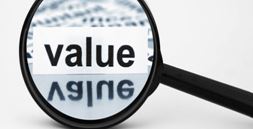 Welcome back everyone after some period of hibernation. In this blog we will talk about “value”. In my last blog on paradigm shift I mentioned that one of the stumbling blocks that can be experienced in HPAM is “defining value”. In HPAM value is the main focus and it is befitting to spend some time understanding what value is and how it can be realized. Organizations design, build, own, operate and maintain physical assets to obtain value from them over their full economic life. Value can be in the form of goods or services, usually produced from the interaction of the 3 Ps – people, plant and process (Ref. Fig. 2.1 in Physical Asset Management-An Organizational Challenge, October 2016) Realizing value from physical assets is the mantra of asset intensive organizations embracing HPAM. As a matter of fact ISO 55000 makes reference to 'value' and 'realize value' in its definitions of asset and asset management respectively. For example, asset is defined as “item, thing or entity that has potential or actual value to an organization”. While asset management is defined as “the set of coordinated activities that an organization uses to realize value from assets in the delivery of its outcomes or objectives. Realization of value requires the achievement of a balance of costs, risks and benefits, often over different timescales.” The key questions to ask ourselves are: What does value means to us, organizations, and asset management practitioners? Most importantly what are we doing to realize value from our physical assets? First and foremost we must differentiate between value of physical assets and value from physical assets. Value of physical assets is the financial value, while value from physical assets is the asset management/HPAM value. HPAM value can be tangible or intangible, financial or non-financial and will depend on the organizational objectives, the nature and purpose of the organization and the needs and expectations of its stakeholders. So, how do we define value in HPAM? Is it value to customers, value to stakeholders, or value physical assets contribute to achieve organizational objectives? How are these values quantified, measured and tracked to support the overall system? Do we have a process in place to actually visualize the activities contributing to the realization of value? Is it a simple list of tasks, or projects that need to be done? Or should it also include a list of activities, or things that we should stop doing? To get a good understanding of how to realize value we need to understand what the value chain in HPAM is. Do you know your HPAM Value Chain?
4 Comments
|
FollowAuthorDharmen Dhaliah, P.Eng, MBA, PMP, CAMA, MMP, CMRP Archives
October 2021
Categories |

 RSS Feed
RSS Feed